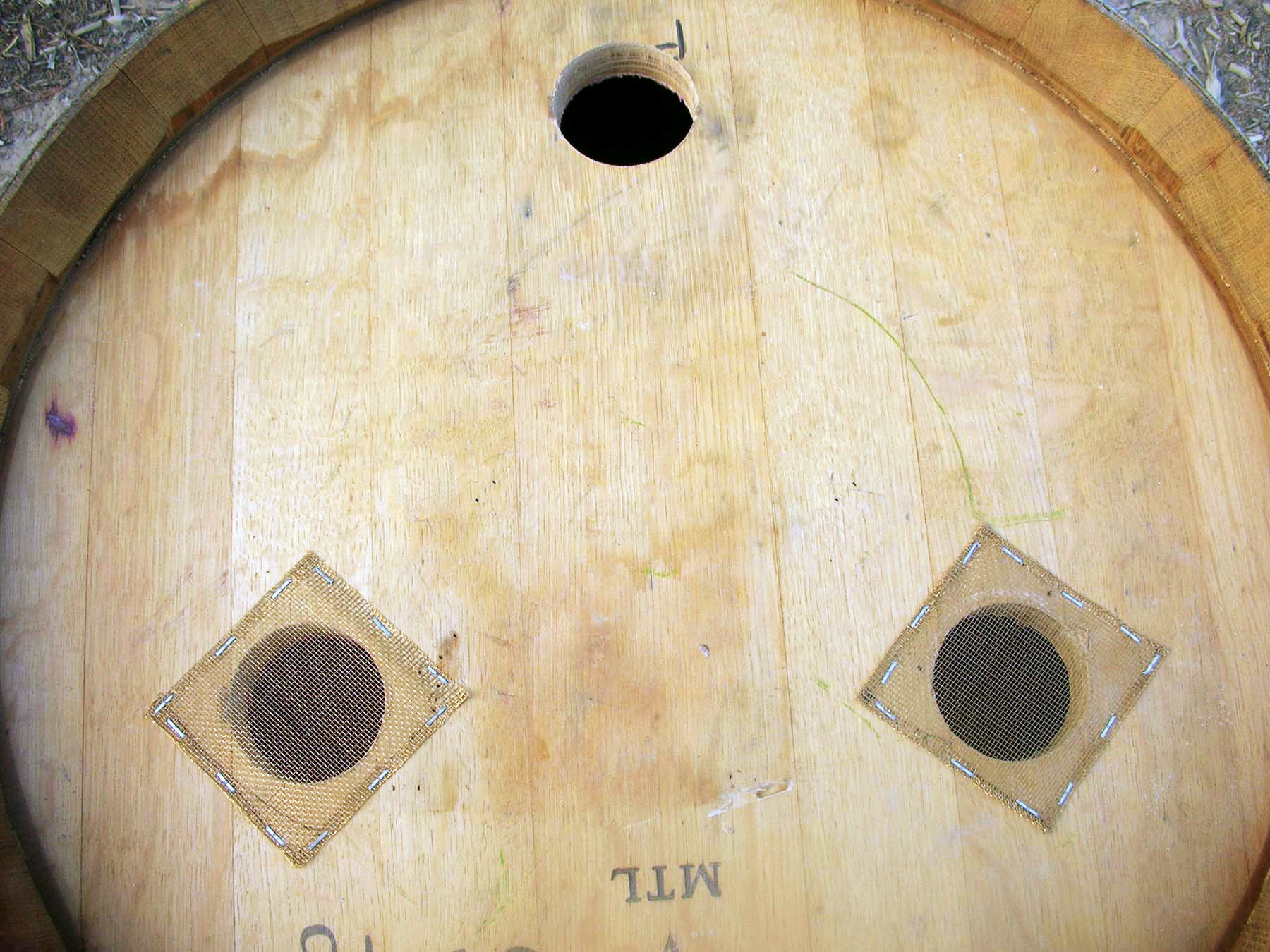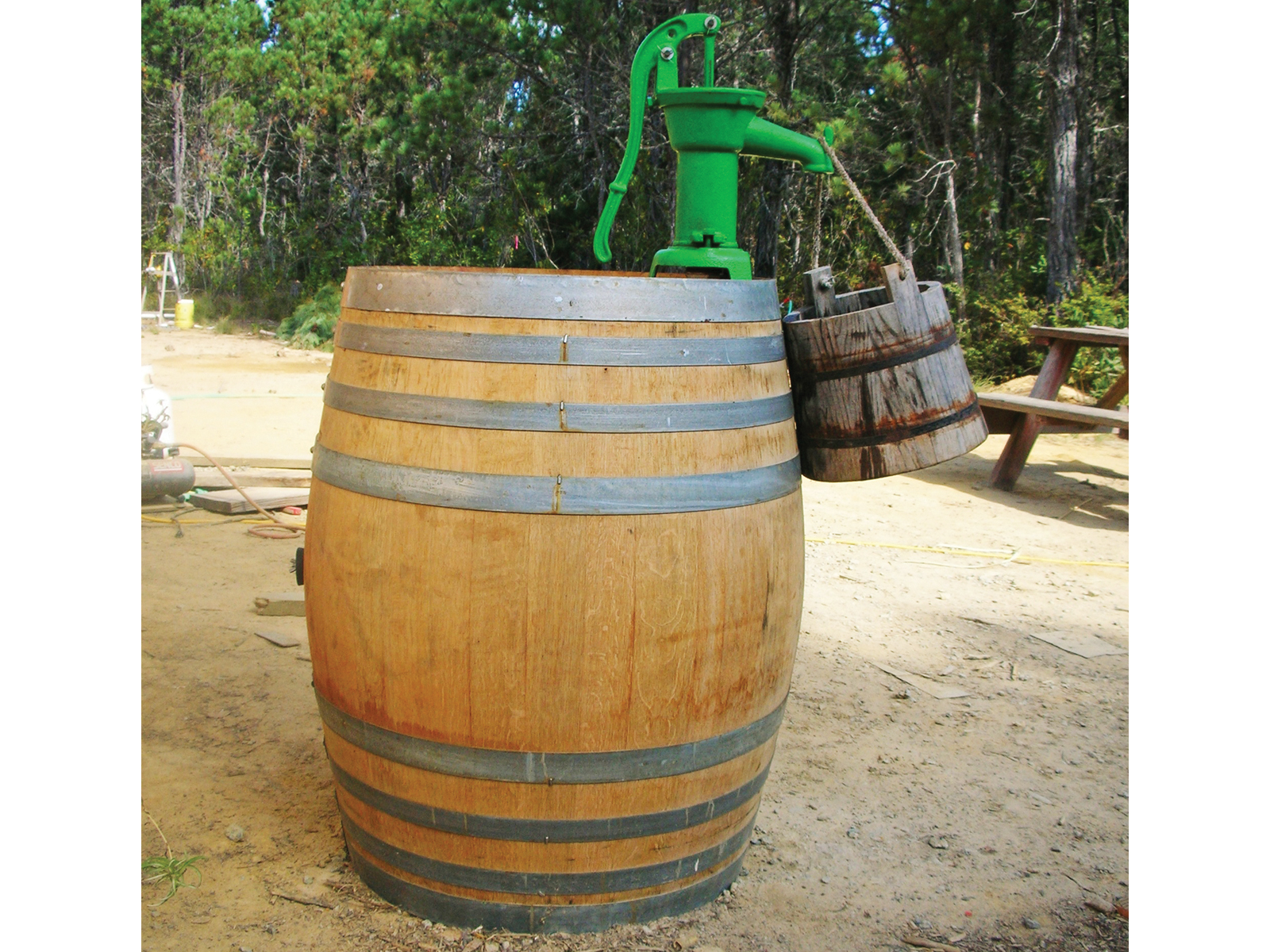Many people let the rainwater that falls on their roof run off, then they use drinking water piped in from afar for washing floors and watering plants. Here’s a handy, mosquito-proof rain barrel we put together that stores 55 gallons of recycled water and adds a handsome accent to our yard. It’s especially valuable during droughts, and if you’re in a rural area with wells and electric pumps, it also means being able to flush the toilet when the power goes out.
Our barrel sits under an eave of our house, where even on foggy days it collects water that trickles down. You can also put it under a downspout, or anyplace else outside where it will capture water.
And if you’re really ambitious, you could have a series of barrels and move the pump from one to the next, or even interconnect them. In some places, though, it may be illegal to capture rainwater, so check your local and state laws.











